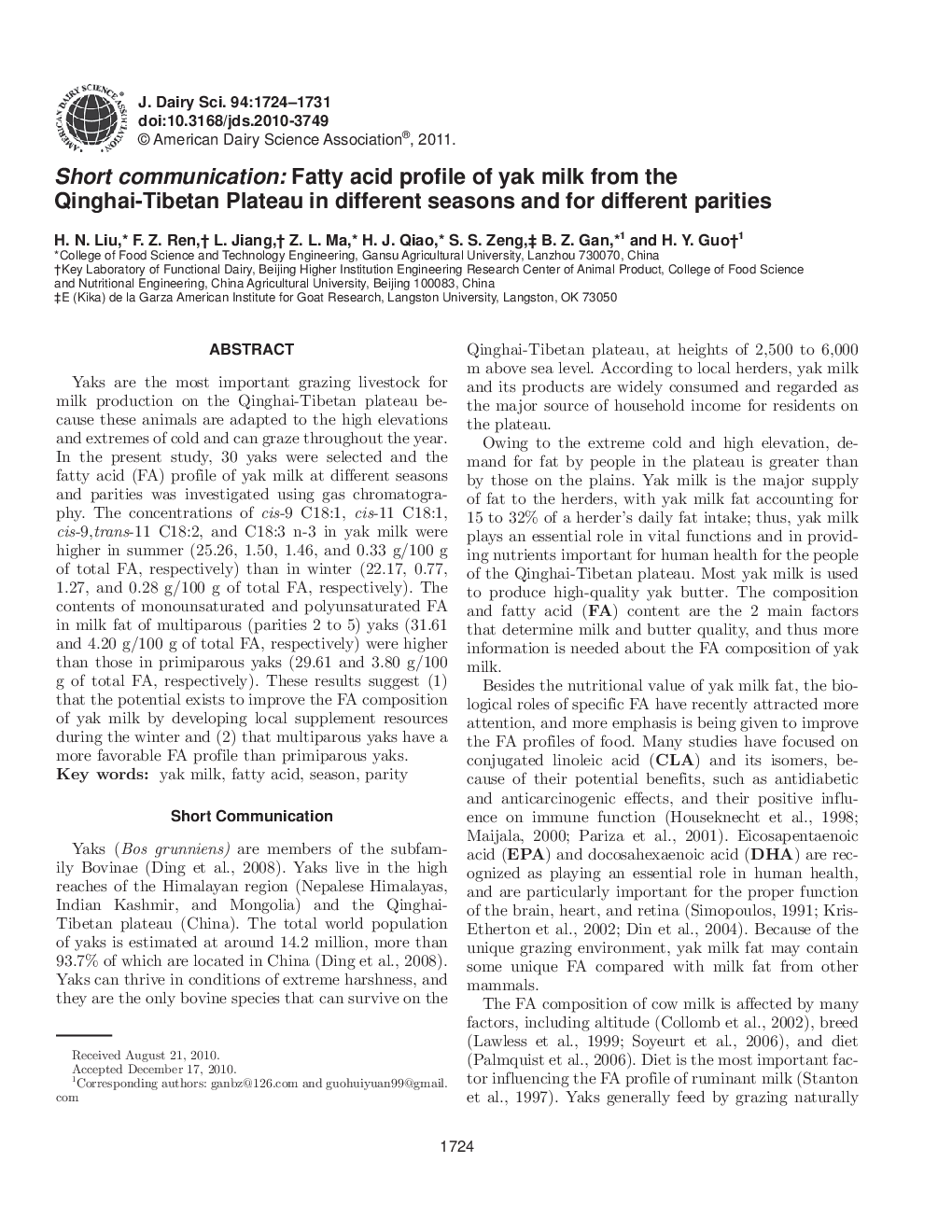| Article ID | Journal | Published Year | Pages | File Type |
|---|---|---|---|---|
| 10982065 | Journal of Dairy Science | 2011 | 8 Pages |
Abstract
Yaks are the most important grazing livestock for milk production on the Qinghai-Tibetan plateau because these animals are adapted to the high elevations and extremes of cold and can graze throughout the year. In the present study, 30 yaks were selected and the fatty acid (FA) profile of yak milk at different seasons and parities was investigated using gas chromatography. The concentrations of cis-9 C18:1, cis-11 C18:1, cis-9,trans-11 C18:2, and C18:3 n-3 in yak milk were higher in summer (25.26, 1.50, 1.46, and 0.33Â g/100Â g of total FA, respectively) than in winter (22.17, 0.77, 1.27, and 0.28Â g/100Â g of total FA, respectively). The contents of monounsaturated and polyunsaturated FA in milk fat of multiparous (parities 2 to 5) yaks (31.61 and 4.20Â g/100Â g of total FA, respectively) were higher than those in primiparous yaks (29.61 and 3.80Â g/100Â g of total FA, respectively). These results suggest (1) that the potential exists to improve the FA composition of yak milk by developing local supplement resources during the winter and (2) that multiparous yaks have a more favorable FA profile than primiparous yaks.
Keywords
Related Topics
Life Sciences
Agricultural and Biological Sciences
Animal Science and Zoology
Authors
H.N. Liu, F.Z. Ren, L. Jiang, Z.L. Ma, H.J. Qiao, S.S. Zeng, B.Z. Gan, H.Y. Guo,
